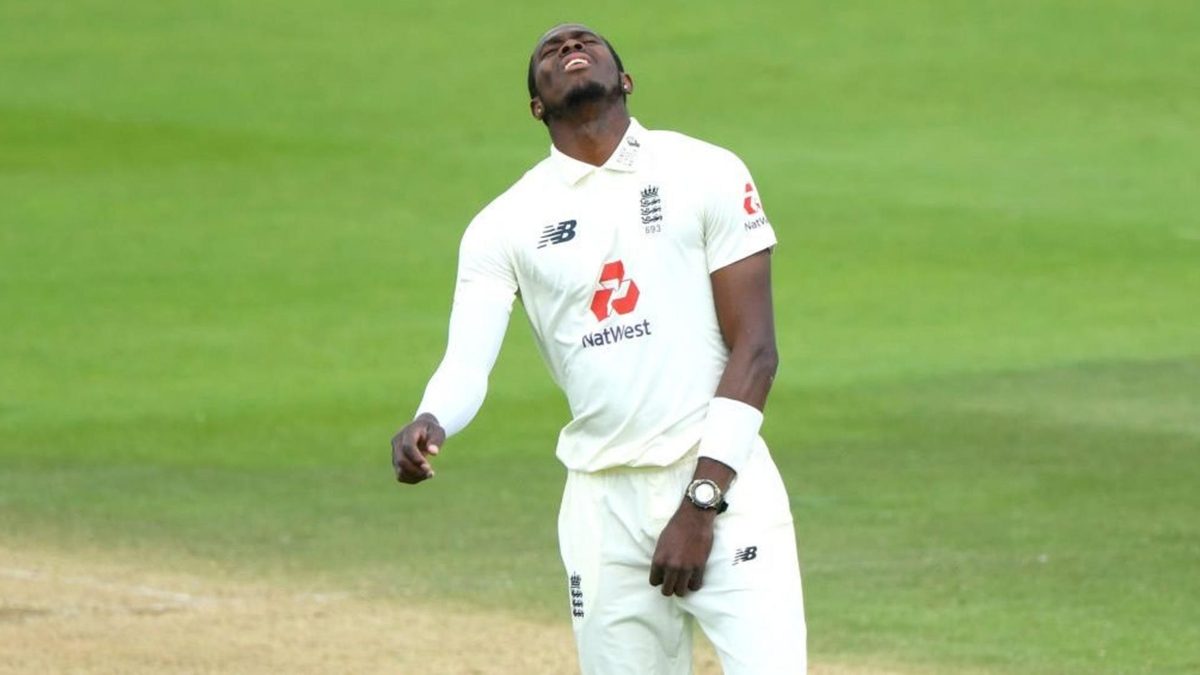
Jofra Archer went wicketless during the first innings of England’s first Test against West Indies at the Ageas Bowl, but not all the criticism directed his way is warranted, writes Ben Gardner.
It was when the second new ball was taken that the rumblings grew louder. West Indies were five down and leading by just 31. Here was the game to be seized. Rattle through them, keep the game within reach, and lay down a marker for the battles to come. James Anderson bowled the first set of six after tea, and then it was over to Jofra Archer.
His first ball was 81mph, and the first two balls of his second over both went to the fence. After five overs, it was Wood’s turn, and right away the speed gun was being tested. Archer’s spell may only have cost 14, but it had threatened little, and West Indies would push on past 300. The comments, from Tino Best and plenty of others, started raining in.
Wood at his most rapid may be slightly quicker than Archer, but what’s so exciting about the latter is that he doesn’t need to be up at 90mph to be a threat. Less than a year ago, in only his second Test match, he set up one of England’s greatest ever wins by taking a first-innings six-for while rarely topping 85mph. Dialling down on the speed gun to make the most of helpful conditions and only cranking it up when you need to is hardly an Archer invention; Dale Steyn is a notable exponent of the method. Being able to do both is what can separate the good from the great. Broad described him before this Test as the only nailed on selection in the attack, and he’s probably right.
Still, England’s Barbados-born quick did look off his best on day three, although even that still isn’t that bad; were it not for a no-ball he would have had the day’s first wicket, and he ended with an economy well below three – the 10 or so runs saved could yet prove vital. CricViz rated the pitch as the easiest for batting produced in England since they began recording data.
Perhaps some of the frustration with Archer is understandable, if still unwarranted. Rarely across all countries has a bowler looked as complete as he does so early into his international career, and that he has already had so many good days makes his not-so-good ones seem all the more jarring.
The Wicket Pace Threat (essentially a difficulty rating for pace and bounce) for the Test so far is 3/10 (higher is harder for batting). That is the lowest for a Test in England in our entire database. #ENGvWI
— The CricViz Analyst (@cricvizanalyst) July 10, 2020
He’s taken three five-fors in seven-and-a-half Tests, peppered the best batsman since Don Bradman, and bowled more overs than anyone else in England’s first World Cup win, including defending seven off the last four balls in the greatest final of all time. The hype is real. But he’s also only just over a year into his international career, with only 36 first-class games under his belt, 27 of which have come in Division Two of the County Championship. There will be games that are looked back on as learning experiences rather than recalled fondly for his successes.
But there’s an unsavoury aspect to some of the criticism directed Archer’s way, particularly on social media. This Test begun with Michael Holding explaining irrefutably how unconscious racial bias invades all our minds, and by the end of day three some England fans were accusing their one Black player of being lazy and needing some fire in his belly, as if Archer has to prove his dedication anew to the national cause each time he takes the field.
This is nothing new for Black sportspeople across all fields – Manchester United’s Paul Pogba is a notable example of a player often accused of not giving his all for the team – and the former is a stereotype that extends for beyond the boundaries of the playing field, used to explain away, erroneously, the racial pay gap among much else.
The story of Wood’s first three years as a Test cricketer is instructive as well. It was one of undelivered promise, of a bowler who was picked to deliver those heart-racing spells constantly hovering in the low to mid 80s, and yet a lack of effort was rarely, if ever, put forward as the reason, with Wood’s injury concerns and lack of rhythm, rightly, being pointed to instead. All could easily be cited for Archer in this case, and yet he doesn’t receive the same leniency.
As the great man Holding himself said when asked if he thought this was the turning point, if this could be the moment things changed for the better, “It’s going to be a slow process, but I hope. Even if it’s a baby step at a time. Even a snail’s pace. But I’m hoping it will continue in the right direction.”








